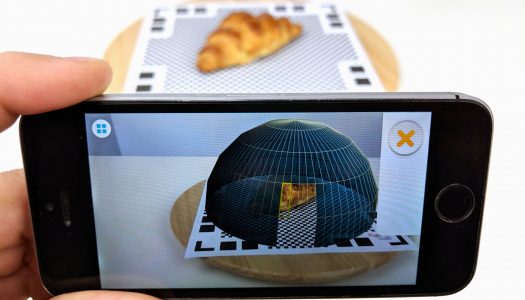You must have heard about the technology but must have wondered what is 3D scanning anyways? 3D scanning is a technology that allows devices such as smartphones to capture information about the shape and appearance of an object or environment in three dimensions. Here’s how:
How 3D Scanning is Done Using Smartphones:
There are a few different ways that this can be done, including structured light, time-of-flight, and laser triangulation.
Structured Light 3D Scanning
Structured light involves projecting a pattern of light onto an object and then capturing an image of the distorted pattern with a camera. By analyzing the distortion in the pattern, it is possible to infer the 3D shape of the object.
Structured light 3D scanning using smartphones
Structured light 3D scanning using smartphones involves using the phone’s camera and a structured light source, such as a projector, to capture information about the shape and appearance of an object in three dimensions. To perform structured light 3D scanning using a smartphone, you will need to follow these steps:
- Set up the smartphone and projector so that they are facing the object you want to scan. Make sure the projector is projecting a pattern of light onto the object and that the smartphone’s camera is positioned to capture the pattern.
- Use a software application on the smartphone to control the projector and capture images of the distorted pattern. The application will typically include a pattern generator that produces a series of different patterns, which are used to extract 3D information about the object.
- As the projector projects each pattern onto the object, the smartphone’s camera captures an image of the distorted pattern. The software analyzes the distortion in the pattern to infer the 3D shape of the object.
- The software combines the images and 3D data to create a 3D model of the object.
Time-of-flight 3D scanning
Time-of-flight involves emitting a pulse of light and measuring the time it takes for the light to bounce off an object and return to a sensor. By knowing the speed of light, it is possible to calculate the distance to the object, which can then be used to construct a 3D model.
Time-of-flight 3D scanning using Smartphones
Time-of-flight (ToF) 3D scanning using smartphones involves using the phone’s camera and a ToF sensor to capture information about the shape and appearance of an object in three dimensions. To perform ToF 3D scanning using a smartphone, you will need to follow these steps:
- Position the smartphone and ToF sensor so that they face the object to be scanned. Ascertain that the ToF sensor emits a light pulse and that the smartphone’s camera is positioned to capture the reflected light.
- ToF sensor can be managed and images of the reflected light can be taken using a smartphone software application. Typically, the application will include a pattern generator that generates a series of different patterns that are used to extract 3D information about the object.
- As the ToF sensor emits a pulse of light and measures the time it takes for the light to bounce off the object and return to the sensor, the smartphone’s camera captures an image of the reflected light. The software analyzes the reflection to infer the 3D shape of the object.
- The software combines the images and 3D data to create a 3D model of the object.
Laser Triangulation 3D Scanning
Laser triangulation involves projecting a laser onto an object and measuring the angle at which the laser is reflected. By knowing the distance between the laser and the camera, it is possible to calculate the distance to the object at each point and create a 3D model.
Laser Triangulation 3D Scanning using Smartphone
Laser triangulation 3D scanning using smartphones involves using the phone’s camera and a laser source to capture information about the shape and appearance of an object in three dimensions. To perform laser triangulation 3D scanning using a smartphone, you will need to follow these steps:
- Put the smartphone and laser source in a position to face the item you wish to scan. A laser should be pointed at the target, and the smartphone’s camera should be placed so it can record the reflected light.
- Control the laser with a smartphone app, and use the camera to take pictures of the reflected light. To extract 3D information about the object, the application will often have a pattern generator that generates a variety of patterns. As the laser projects a beam of light onto the object and the smartphone’s camera captures an image of the reflected light, the software analyzes the angle at which the light is reflected to infer the 3D shape of the object.
- The software combines the images and 3D data to create a 3D model of the object.
Summary:
3D scanning can be used for a variety of purposes, including creating 3D models for video games, virtual and augmented reality applications, and 3D printing. Some smartphones include 3D scanning capabilities, either through dedicated hardware or through software that uses the phone’s camera and other sensors to perform the scanning. Above we have mentioned different ways smartphones can perform 3D scanning. We hope it helps.

